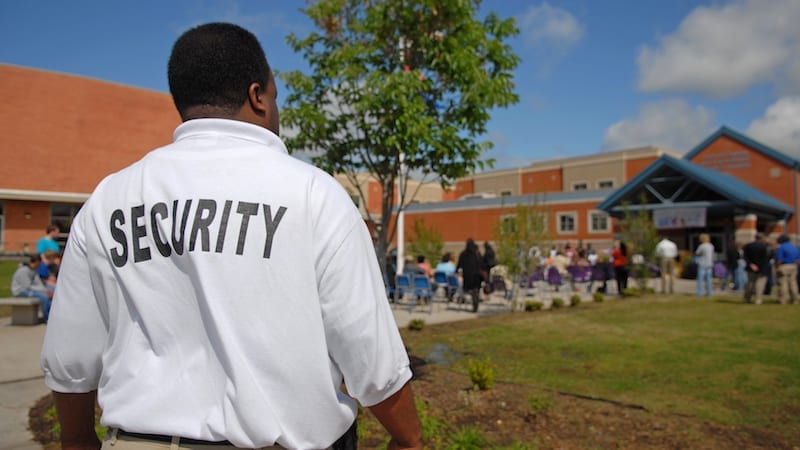Last week’s horrific shooting at a high school in Parkland, Florida has once again left the nation feeling heartbroken and helpless. During this tragic time, your teachers, students and parents are looking to you for guidance. Here are 5 ways that principals can show leadership when responding to school shootings.
1| Emphasize that school is safe
When we’re faced with unimaginable violence, it’s hard to remember that schools, overall, are incredibly safe. Remind your teachers, students and parents of this. The National Association of School Psychologists (NASP) recommends pointing out that less than one percent of violent deaths are school related.
One way to reassure people subconsciously is by being a visible presence in your school, NASP says. Answer questions directly and with age appropriateness in mind (especially when talking to students). Meeting with teachers and writing a letter to parents can show your community that you understand their fear, but want to give context as well.
2| Remind them that you have a plan
In the face of tragedy, we want to feel safe. One way to help your community feel safer is by reminding them that you have a plan in place for active shooter and other dangerous situations, NASP says. This is a good time to review your safety plan with staff and students. Knowing what to do in the face of the unthinkable can help staff and students feel that they’re taking back a bit of control.
It’s also a good idea to write a letter to parents, reminding them about safety procedures and the fact that you and local law enforcement have worked together to craft a plan designed to save lives.
3| Provide Psychological First Aid
Teachers, students and families are probably feeling entirely overwhelmed by the news of 17 more people killed in school-related gun violence. Even for those who were not directly impacting, the news coverage can be traumatic. The National Child Traumatic Stress Network suggests applying “Psychological First Aid” in these situations. The network provides in-depth guidelines for administrators to navigate through a crisis in a trauma-sensitive way.
An important part of this is having open conversations. For younger students, utilize books to talk about fears and anxiety in an age-appropriate way. For older students, begin normalizing the conversations about mental health, and emphasize that it is never wrong to ask for help.
4| Create a safe space
With emotions running high, many staff and students would benefit from a safe space. Here they can vent, exchange ideas and talk with others about how they are feeling. The best way to approach this is to allow teachers to express their feeling of fear and frustration during a staff meeting. In turn, they can open their classrooms (as much as they are comfortable) for conversation between students.
5| Support activism in your community
Many people in schools are fed up with feeling afraid while nothing change. Now, there is a movement to organize a number of walkouts and other protests in favor of gun control legislation. Talk to your teachers and students about whether and why they would like to participate in these events. Consider what might be done on an official or whole-school level.
Soon after Parkland, educational psychologist David Berliner called for a teacher walk-out on May 1.
“Almost all of America’s 3 million teachers— nurturers and guardians of our youth– want sensible gun laws. They deserve that,” he said. “But they have to be ready to exert the power they have by walking out of their schools if they do not get what they want. They have to exert the reputational power that 3 million of our most admired voters have.”
The organizers of the Women’s March have since called for a school walkout on March 14. This protest will last for 17 minutes (in honor of the number of victims at Parkland) at 10 a.m.
On March 24, students and others will participate in the March For Our Lives in Washington D.C.
“We cannot allow one more child to be shot at school. We cannot allow one more teacher to make a choice to jump in front of a firing assault rifle to save the lives of students,” the march’s mission statement reads. “Our children and teachers are dying. We must make it our top priority to save these lives.”
No one should ever need to deal with a school shooting. Sadly, however, this has become relatively common, and your community needs your leadership now more than ever.
Join our Facebook group Principal Life Principal Life for more conversation about and insights into the challenges of school leadership.

